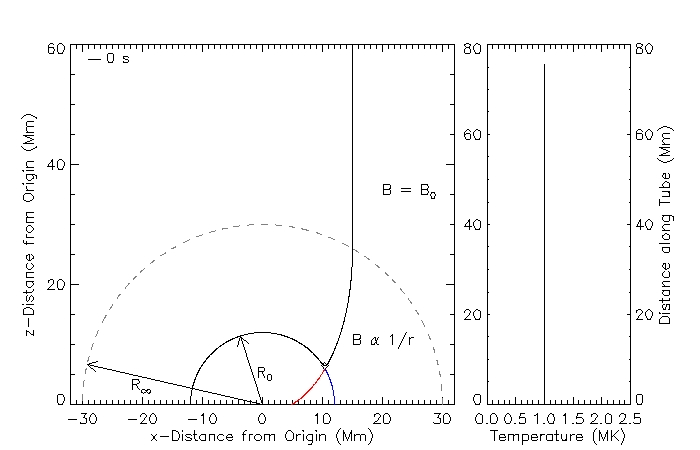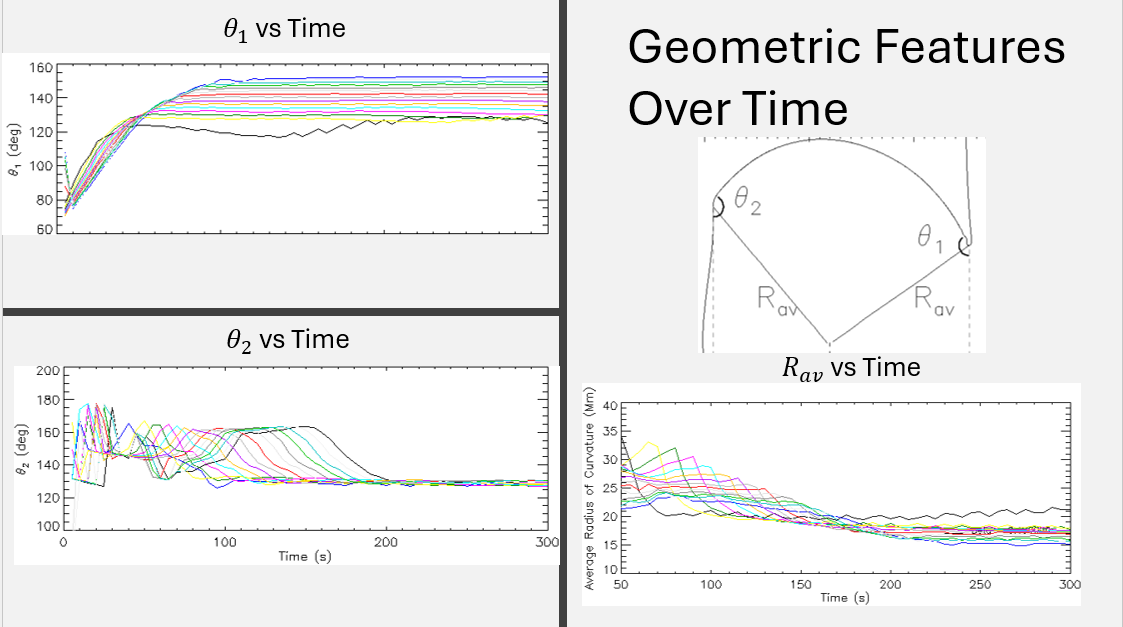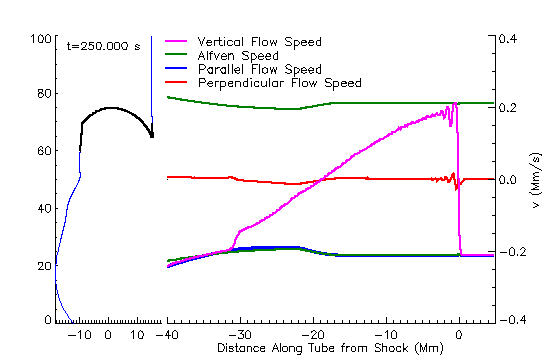Poster
Background & Motivation
Magnetic Reconnection is a process in which the shape of magnetic field lines change releasing Magnetic energy. The "Interchange" descriptor means that magenetic reconnection occurs between an open and closed field line causing their foot points to interchange. Magnetic reconnection occurs frequently on the Sun and is one of the driving mechanisms in Solar Flares, however, this project investigates how Magnetic Interchange Reconnection causes another phenomena observed around the sun, Switchbacks.
Switchback is a generic term for observed reversals, positive flux in a predominately negative flux region, in the Suns radial magnetic field. These reversals originate from measuring a kinked, or non-straight, magnetic field line. Most recently these Switchbacks were measured by the Parker Solar Probe (PSP) at a minimum distance of only 13.3 solar radii.
The motivation behind this project was to shine more light on the connection between magnetic Interchange Reconnection and Switchbacks. Our approach focused on numerical simulations to investigate the evolution of post reconnection field lines.
The Model
Below is an example of the initial state of the model we used.

We utilize a 2-D model with the Thin Flux Tube (TFT) aproximation and the Magneto Hydrodynamic (MHD) Equations. The simulations are initialized after a reconnection has already occured, since this model is only valid for ideal processes. A closed circular flux tube is joined with an open vertical flux tube to begin. Other initial conditions include the raidus of the closed flux tube, the reconnection angle which specifies where on the circular loop the reconnection occured, and the field strength. The magnetic field inside the tube is set by an external field which decreases as 1/r inside the cutoff raidus (R_co), but is constant outside it.
An Example Run
Below is a movie showing the evolution of the flux tube.
The most interesing part of this movie the enlarged portion of the tube which seems to propagate up and remains unchanged in the moving refrence fram. We show that this wave is a nonlinear Alfven wave and in particular for certain initial conditions the kink at the start of the wave constitutes a Switchback. There are also other important features of the wave, namely that each wave can be defined as an arc of a circle.
Question 1
"So these waves will be measured as Switchbacks, but how do we know if they are steady state solutions or transient?"
We answer this in two ways. Firstly, we measure the wave and observe its behaviour over time.

There is a clear trend of all these quantites towards a constant value which corroborates this wave being a steady state solution. This was certainly promising, but not conclusive, mainly because our simulations only run two a max height of ~1 solar radii, but Switchbacks are observed further away, ~13 solar radii at the closest. So we need some more evidence.

This figure shows the flowspeed of the plasma in the reference frame commoving with the wave. From this figure we see that the perpendicular flowspeed, in red, is zero, while the parallel flowspeed, in blue, is equal to the Alfven speed, green. With this information we can show that the tube's momentum has no explicit dependence on time, or that this constitutes a steady state solution.
Lastly, we also tested multiple initial conditions and found all to produce the circular wave, but only certain values to produce Switchbacks.

The various initial conditions are shown in this graph. The initial bend angle, where the switchbacks can form, is plotted versus the readial travel time from the closed flux tube to the cutoff radius at the Alfven speed. The tube does not actually travel radial but this quantity does a good job of incorporating the varius initial conditions into one number.
Conclusion
In conclusion, we found Magnetic Interchange Reconnection to be a generator of Switchback formations. Specifically, capable of producing nonlinear Alfven waves with geometries constituting reversals in the radial magnetic fields. However, not all initial conditions resulted in waves which produced switchbacks. One determining factor was the radial travel time between the closed flux tube and cuttoff radius. We also conclued that these waves form steady state solutions to the momentum equations, which validates the conjecture that these could be the same switchbacks observed at ~13 solar radii.

